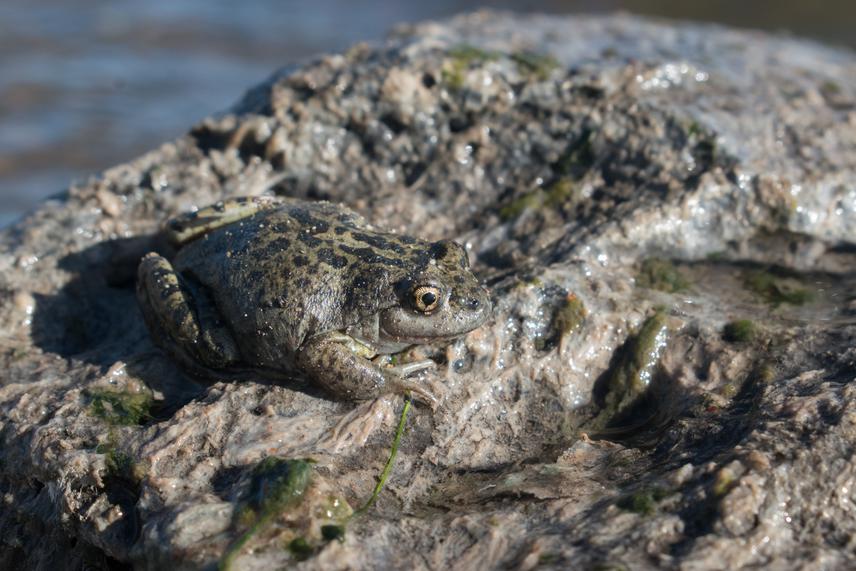Melisa Rolón
The Patagonia frog (Atelognathus patagonicus) is endemic to the lagoons of northwestern Argentinian Patagonia. The species was once abundant in Laguna Blanca, the largest and only permanent habitat within its range. However, the introduction of invasive predatory fish led to its local extinction in this lagoon. Smaller subpopulations persist in temporary, isolated lagoons, but face human-related threats such as livestock pressure, which alters the habitat. Additionally, between 2010 and 2016, an unusually prolonged and severe drought dried up these lagoons, contributing to an estimated population decline of over 90%. For these reasons, the species was categorized as “Critically Endangered” by the IUCN Red List.

Pataonia frog (Atelognathus patagonicus). Litoral morphotype. ©Facundo de Los Santos.
This project will help to reversing the decline of the Patagonia frog by: (1) creating safe habitats as “sanctuaries”; (2) increasing survival of egg-clutches from desiccating lagoons by developing them in the sanctuaries; (3) increasing subpopulation density by translocating individuals from ex-situ facilities to safe habitats; and (4) restoring habitat by fencing a lagoon to prevent livestock entry.
Header: Laguna Blanca lagoon. Type locality of the Patagonia frog, now extinct due to fish introduction. ©Facundo de Los Santos.